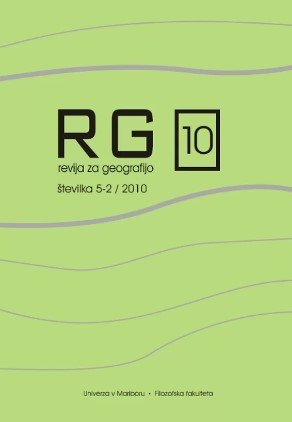New Challenges for Sustainable Rural Development in the 21st Century (part 4)
DOI:
https://doi.org/10.18690/rg.5.2.4039Abstract
The relation between rural and urban areas differs widely through the World. In some areas, particularly in Europe, the distinction between rural and urban is becoming increasingly blurred. This regards in particular rural areas close to urban centres where a process of integration of rural and urban space is taking place. Thus many rural areas, while benefiting from an increased interaction with the urban areas close by and/or from an increasingly diversified economic base, also face the challenges of losing their rural characteristics and identity. At the same time more remote rural areas with low population density and a difficult economic development face an increasing dichotomy between rural and urban areas. Over the next decade urban agglomerations will benefit from current economic and demographic trends whereas many remote rural areas face increasing difficulties and needs to better capitalise their territorial potential.
Downloads
References
Petauer M. (2010). Management of Soil as a Natural Resource in the Savinjska Statistical Region. Journal for Geography, 5(2), 15-26. https://doi.org/10.18690/rg.5.2.4025
Pina H. (2010). The Importance of Complementarity in the Territorial Cohesion and Sustainability of Rural Areas: The Case of Cambres, a Douro Winegrowing Area, and Magueija, a Mountainous Area . Journal for Geography, 5(2), 27-42. https://doi.org/10.18690/rg.5.2.4026
Kraner M., & Lorber L. (2010). Structural Changes in Agriculture in the Pomurje Region After 1991. Journal for Geography, 5(2), 43-54. https://doi.org/10.18690/rg.5.2.4027
Cunder T., & Bedrač M. (2010). The “LEADER Approach” - New Development Opportunity for Rural Areas in Slovenia. Journal for Geography, 5(2), 55-65. https://doi.org/10.18690/rg.5.2.4028
Sancho Reinoso A. (2010). Fighting for Survival - Planning and Development Issues in two European Rural Border Mid-Mountain Regions . Journal for Geography, 5(2), 67-81. https://doi.org/10.18690/rg.5.2.4029
Iqubal A. (2010). Role of Livestock Husbandry on Rural Transformation in North India: A case study. Journal for Geography, 5(2), 83-94. https://doi.org/10.18690/rg.5.2.4030
Khan N., & Iqubal A. (2010). Livestock Revolution and Its Impacts on the Sustainability of Marginal and Small Farmers in India: A Case Study . Journal for Geography, 5(2), 95-108. https://doi.org/10.18690/rg.5.2.4031
Guntoro B. (2010). Community development plan: Rural livestock, agriculture and livelihood in Indonesia. Journal for Geography, 5(2), 109-119. https://doi.org/10.18690/rg.5.2.4032
Cencič A., Langerholc T., & Roy K. (2010). Potential Role of Probiotics for Sustainability in Rural India. Journal for Geography, 5(2), 121-128. https://doi.org/10.18690/rg.5.2.4033
Turinek M., Turinek M., Grobelnik Mlakar S., Bavec F., & Bavec M. (2010). Ecological efficiency of production and the ecological footprint of organic agriculture. Journal for Geography, 5(2), 129-139. https://doi.org/10.18690/rg.5.2.4034
Hoření K., Krylová R., Ulčák Z., & Klvač P. (2010). Tourism and Authenticity in the Czech Villages of the Romanian Banat . Journal for Geography, 5(2), 141-147. https://doi.org/10.18690/rg.5.2.4035
Pažek K., & Rozman Č. (2010). Tourist Farm Service Quality Assessment. Journal for Geography, 5(2), 149-158. https://doi.org/10.18690/rg.5.2.4038
Downloads
Published
Issue
Section
License
Copyright (c) 2010 Lučka Lorber

This work is licensed under a Creative Commons Attribution 4.0 International License.
